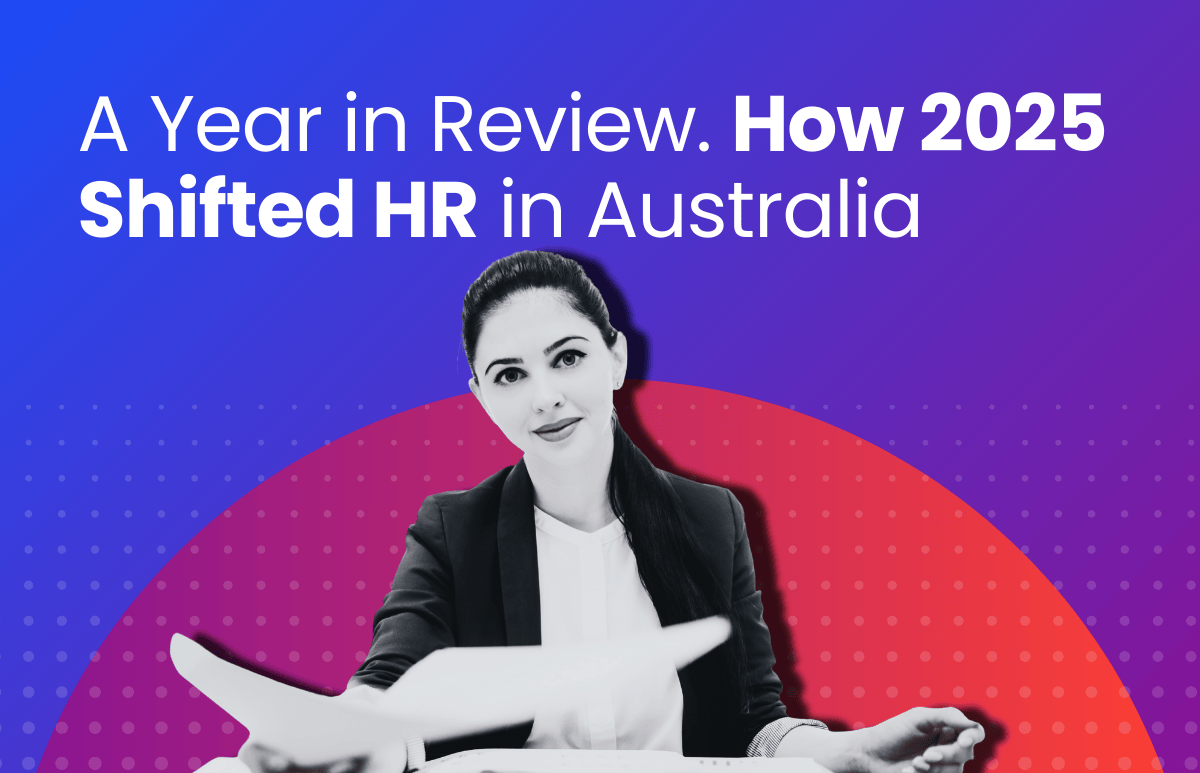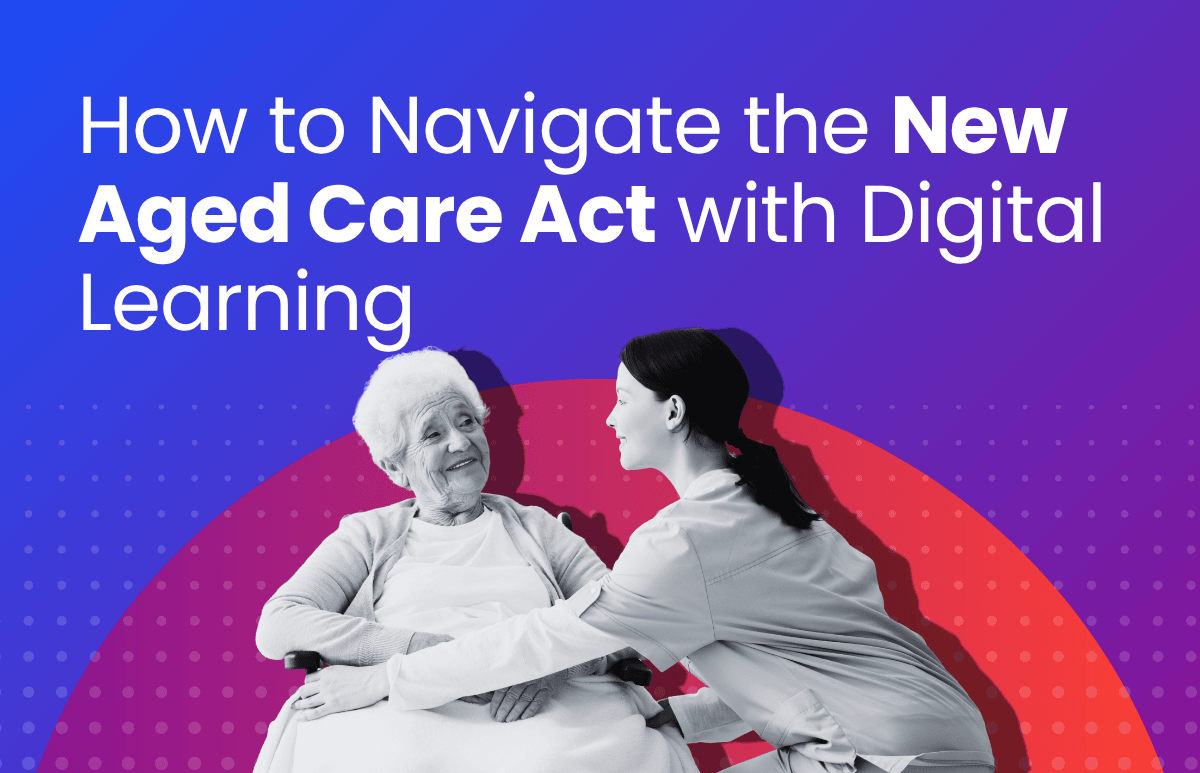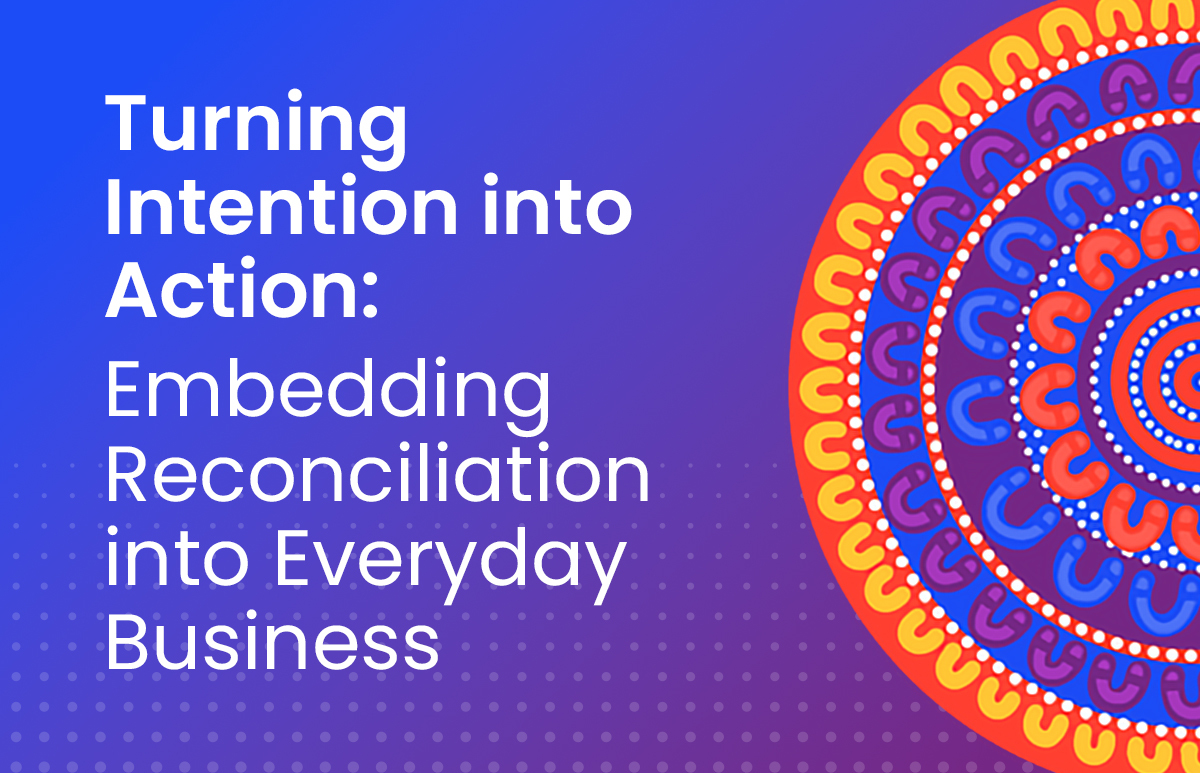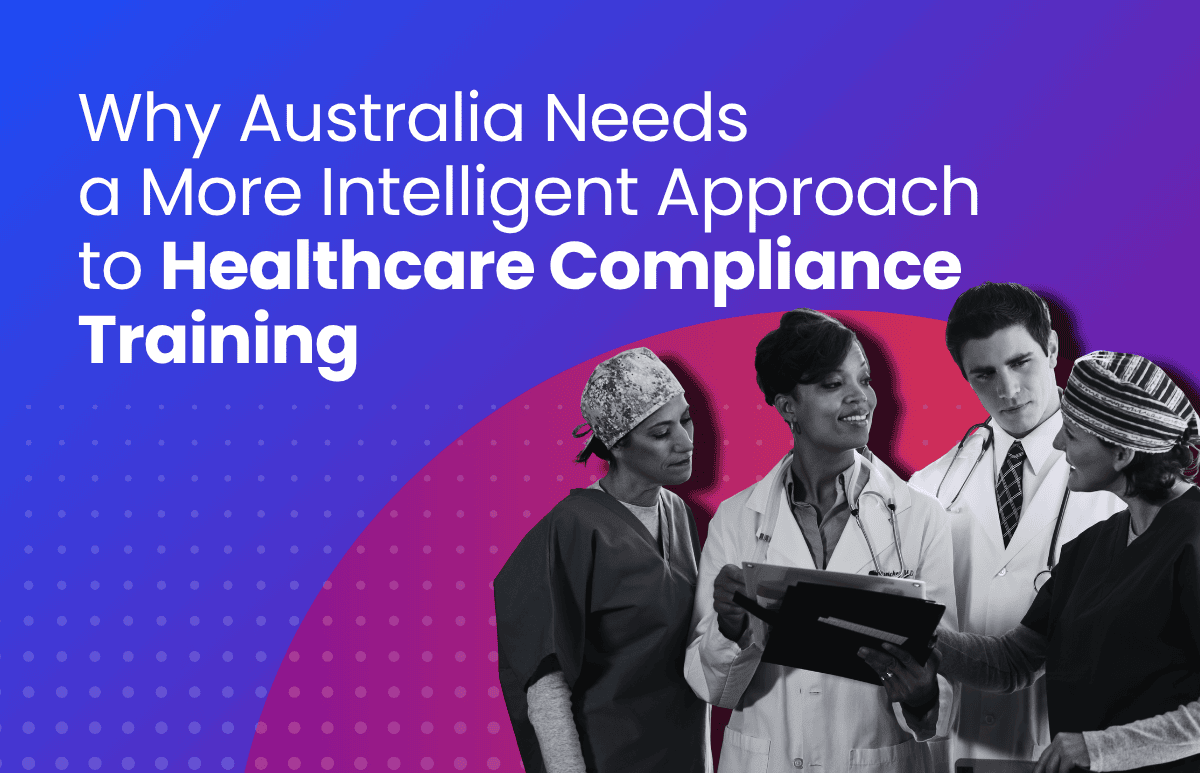Aged Care Act Q&A: How HR Leaders Stay Audit-Ready Every Day
Now that 1 November 2025 has passed and the new Aged Care Act has commenced, aged care providers are transitioning to a fundamentally different system.

HR leaders in aged care are no longer simply preparing for a single audit. You’re managing the elevated standards and reporting requirements from training to workforce capability.
To help answer some burning questions, this Q&A unpacks what HR teams need to know as the sector transitions to the new regulatory framework, helping you build confidence in your compliance approach while focusing on what matters most: delivering high-quality care.
Want to assess your readiness? At the end of this Q&A you’ll find our Compliance Health Check Checklist to help identify where your systems can be strengthened.
Disclaimer:
This guide is a practical tool to help you understand your obligations under the Aged Care Act 2024. It is not legal advice.For detailed guidance, refer to:
- Aged Care Act 2024 and Aged Care Rules 2025
- Aged Care Quality and Safety Commission at agedcarequality.gov.au
- Your legal and compliance advisors
1) What does “compliance readiness” really mean for HR under the new Aged Care Act?
A lot of this will fall on the shoulders of HR.The new Aged Care Act has changed how aged care is regulated in Australia. This means:
- Keeping employee qualifications, certifications and training data accurate and accessible
- Demonstrating workforce capability to deliver person-centred care
- Linking HR, payroll and rostering data so governance can be demonstrated quickly.
The focus has now shifted from scattered paperwork and Excel sheets to proactive systems that demonstrate commitment to rights-based care. Teams who’ve adopted digital platforms to automate record-keeping and reporting will be able to respond instantly, freeing up precious time to focus on people and care, not paperwork and email chains.
2) What are the main compliance obligations aged care providers face under the new Act?
The new Act introduces several specific obligations that directly impact HR and workforce management:
Registration and provider considerations
Based on the new regulatory framework, providers may need to consider:
- How staff understand and can demonstrate the Statement of Rights for older people
- Whether care processes uphold dignity, choice, and safety
- How the governing body understands its role in delivering rights-based care
- How team members can explain how their role supports person-centred care
- Whether onboarding includes comprehensive training on the Statement of Rights
Workforce conduct and capability
The Aged Care Code of Conduct outlines expected behaviours for workers and providers. Key considerations could include:
- How workers understand and follow the Aged Care Code of Conduct
- How leaders meet the heightened standards for responsible persons
- Systems to identify and address Code breaches
- How staff understand the consequences of non-compliance
Quality and safety
Providers should be prepared to address:
- Compliance with strengthened Aged Care Quality Standards
- Incident management and reporting processes
- Complaints handling procedures that protect people from retaliation
Common operational challenges
Many providers transitioning to the new framework may face practical challenges with:
- Maintaining current training records and certifications
- Keeping qualification documentation up to date
- Managing accurate wage and rostering data
- Demonstrating Code of Conduct compliance efficiently
- Integrating data across HR, payroll and rostering systems
Of course, these aren’t deliberate oversights. Often these issues stem from chaotic, manual and disconnected systems.
Bringing everything into one central, digital platform restores control, visibility and trust across the employee lifecycle. Making it straightforward to demonstrate compliance with your obligations under the Act.
3) How does training and workforce development support compliance with the new Act?
Training isn’t just an administrative requirement; it’s the true foundation of safe and consistent care.
An integrated Learning Management System helps HR teams:
- Assign mandatory courses that align with Code of Conduct requirements
- Track completions in real time
- Get automatic alerts before certificates expire
- Create instant audit reports that demonstrate workforce capability
When training compliance is automated and integrated with your broader HR system, it puts an end to last minute scrambles and becomes part of everyday operations.
4) Why is data management critical under the new regulatory framework?
Even the best HR system and compliance approach will fall apart without the foundation of reliable records.
Without reliable, centralised records, you can’t confidently show:
- That every staff member meets the requirements of the Act
- How your workforce practices align with the Act
- That qualifications, police checks, and certifications are current
- Consistency between what you report and what your systems show
Accurate, integrated data across HR, payroll, learning, and rostering ensures:
- Every qualification and clearance is up to date and verifiable
- Information flows automatically between systems, eliminating duplication and manual errors
- You can quickly generate evidence of compliance when the Commission requests it
- Decisions about workforce capability are based on current, reliable information
With unified systems, you can respond immediately with accurate evidence, demonstrating professionalism and control.
But integrated data management isn’t just about regulatory readiness. It’s about delivering safe, consistent care backed by evidence you can trust.
5) How does payroll and rostering connect to Aged Care Act compliance?
While payroll accuracy is primarily a Fair Work compliance matter, rostering practices directly impact your ability to deliver quality care under the new Act.
The new Act’s funding model includes
- AN-ACC (Australian National Aged Care Classification) for residential care, which considers care needs and complexity
- Support at Home program with person-centered subsidies
- Requirement for 24/7 registered nurse presence in residential care (separate regulatory requirement)
Connected HR, payroll, and rostering systems help you
- Ensure appropriately qualified staff are rostered to meet care requirements
- Track care delivery against the Quality Standards
- Maintain visibility over workforce capability across different settings
- Align staff qualifications with the care being delivered
For Fair Work compliance (separate from the Aged Care Act)
- Correct award interpretation under SCHADS (Social, Community, Home Care and Disability Services Industry Award) and relevant modern awards
- Accurate recording of hours, leave, and entitlements
- Proper overtime and penalty rate calculations
A unified platform that connects these functions ensures your rostering decisions support quality care delivery while also meeting employment law obligations. This creates a complete picture of workforce compliance across multiple regulatory frameworks.
6) What does the Aged Care Quality and Safety Commission look for?
The Aged Care Quality and Safety Commission has strengthened regulatory powers under the new Act to support providers in delivering safe, quality care that upholds older people’s rights.
While specific requirements vary by provider type and circumstances, the Commission’s regulatory approach generally considers areas such as:
- Rights-based care delivery: How providers demonstrate understanding and implementation of the Statement of Rights and Principles
- Workforce management: Staff qualifications, training records, background checks, and Code of Conduct compliance
- Operational systems: Incident management, complaints handling, and governance processes
- Quality outcomes: Evidence of care that meets the strengthened Quality Standards
Important: The specific evidence and documentation required will depend on your individual circumstances, registration conditions, and the nature of regulatory contact. Providers should refer to official Commission guidance and seek their own advice about their specific obligations.
Providers using integrated HR systems often find they can access and provide requested information more efficiently, supporting transparent and responsive engagement with regulators.
7) What practical steps can HR teams take right now?
Start with a system health check
- Assess your current state:
- Where does employee data currently live?
- Can you quickly show workforce compliance with the Act?
- How long would it take to generate evidence of compliance?
- Identify gaps and risks:
- Manual processes that create errors or delays
- Disconnected systems that make it hard to see the full picture
- Missing or outdated records that could raise regulatory concerns
- Move toward integration:
- Connect HR, learning, payroll, and rostering into one platform
- Automate compliance tracking for certifications and training
- Create workflows that align with your obligations under the Act
- Focus on rights-based care:
- Train your team on the regulatory changes and how HR processes support it
- Ensure onboarding complies with your regulatory requirements
- Build a culture where compliance flows from commitment to quality care
Even small steps toward a centralised, automated systems can reduce risk and build confidence as the sector transitions to the new regulatory framework.
8) Beyond compliance, what’s the wider benefit of modern HR systems?
The new Aged Care Act creates an opportunity to transform how you manage your workforce – not just to meet regulatory requirements, but to build a stronger, more capable organisation.
When HR, payroll, learning, recruitment and onboarding are connected, decisions are based on facts. Leaders gain a clear view of their workforce and can act faster on what matters most.
Strong, integrated HR systems help leaders with:
Strategic insight
- Clear visibility of workforce capability and gaps
- Data-driven decisions about recruitment and development
- Understanding of labour costs, turnover, and skill distribution
Operational efficiency
- Reduced duplication and manual administration
- Streamline hiring, onboarding, and training processes
- Automated compliance tracking that frees up HR time
Person-centered care support
- Confidence that staff have the skills to uphold older people’s rights
- Better workforce planning to ensure consistent, quality care
- Ability to respond quickly when care needs change
Regulatory confidence
- Single source of truth for all workforce information
- Instant evidence generation for Commission oversight
- Transparency that demonstrates commitment to accountability
For aged care providers, the real value isn’t just avoiding regulatory issues – it’s building an organisation where workforce management actively supports the delivery of safe, dignified, rights-respecting care that older Australians deserve.
9) How does ELMO help aged care providers navigate the new regulatory framework?
ELMO’s unified HR platform brings together HR Core, Learning, Payroll, Rostering, Recruitment, Onboarding, and more in a single ecosystem designed to support compliance and performance.
For Aged Care Act compliance:
- Centralised records demonstrating workforce capabillity
- Automated tracking of training and certifications
- Integrated systems that create a reliable audit trail
- Quick evidence generation when the Commission requests information
For operational strength:
- Data-driven insights into workforce planning and capability
- Streamlined processes that reduce administrative burden
- Connected modules that eliminate duplication and errors
- Foundation for continuous improvement in care delivery
ELMO’s HRIS helps aged care providers transition to the new regulatory model with confidence, turning compliance from a reactive burden into a proactive foundation for delivering high-quality, person-centered care.
Download Our Aged Care Compliance Checklist
Ready to move from pressure to performance?
See how ELMO’s all-in-one HR platform helps aged care providers stay compliant, confident and ready for anything.

 HR Core
HR Core 









